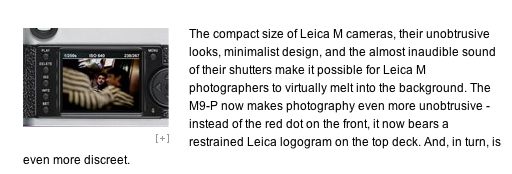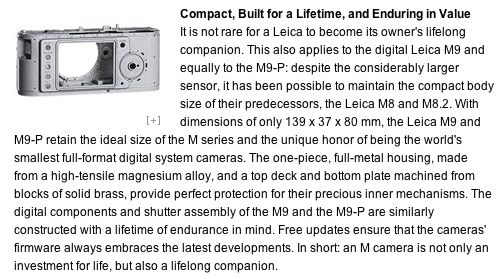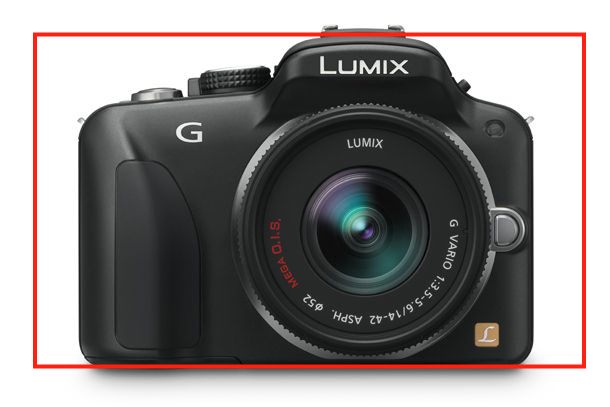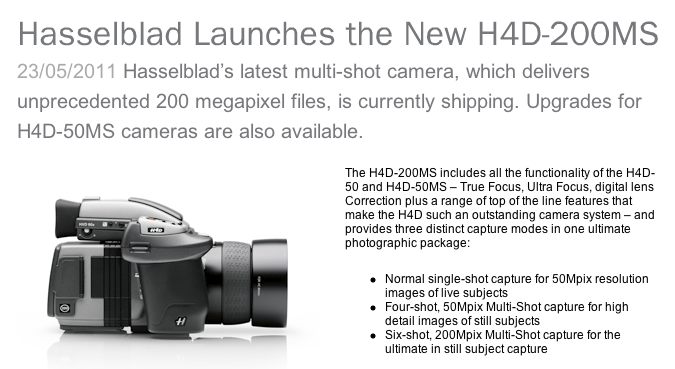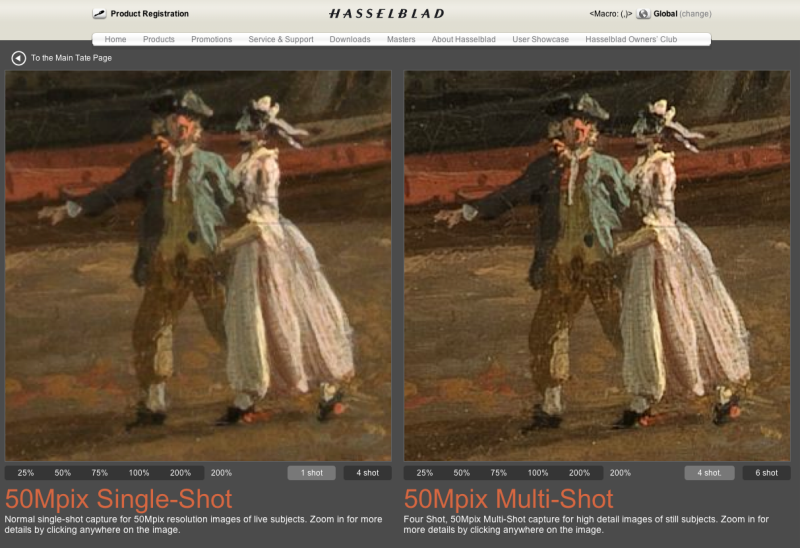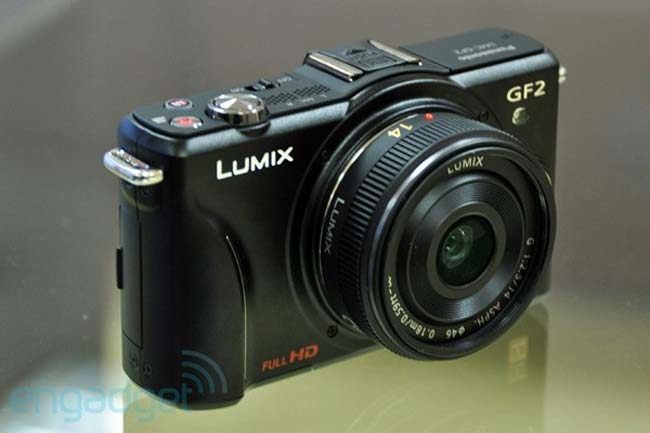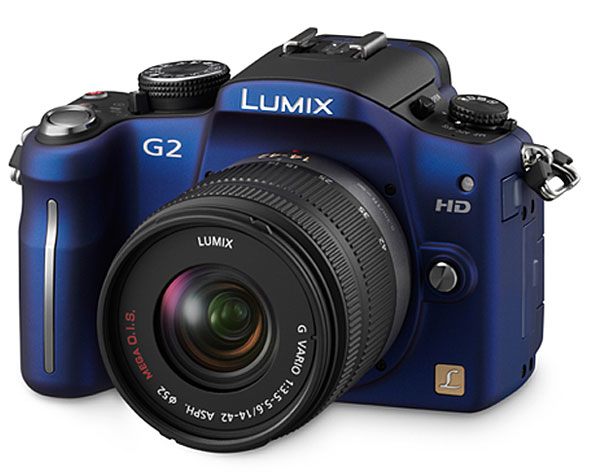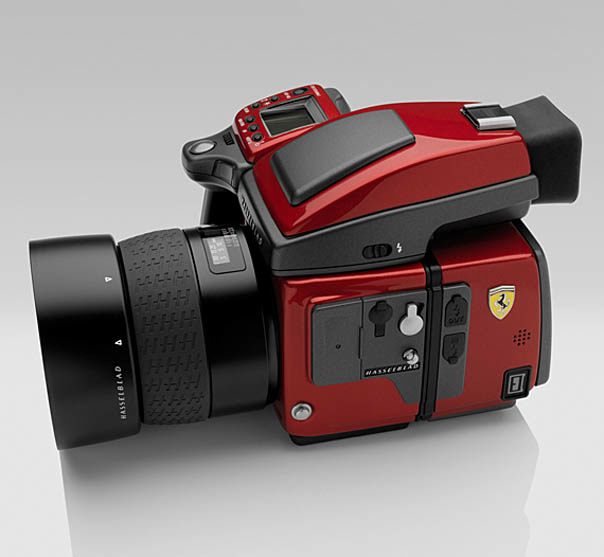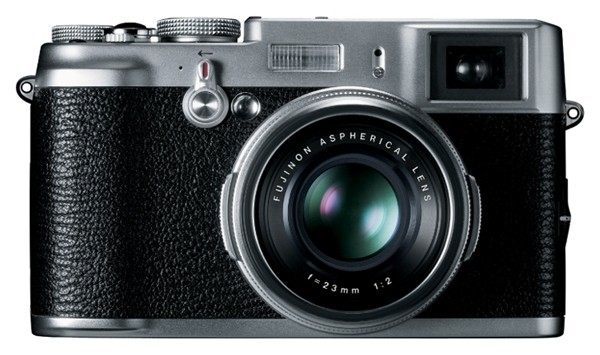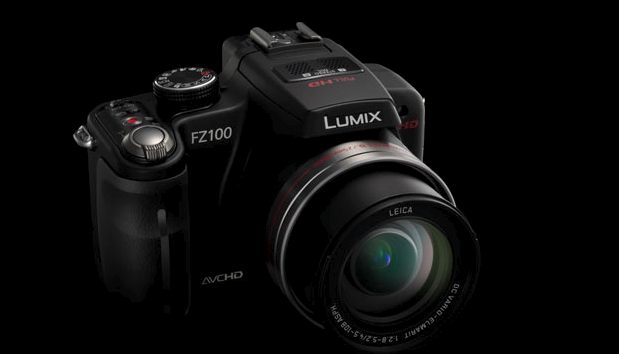Aptly named.
Some wag at Pentax must have named their new forthcoming toy camera, for the ‘Q’ designation is nothing less than a loud Question as to who on earth needs this?

The Pentax Q. Or is that Q?
It’s truly depressing to see Pentax make a camera with a minuscule digital sensor and interchangeable lenses. The very thought of the mistaken market research that went into the decision to commit significant amounts of capital to engineering and producing this camera and its five lenses for a market which does not exist boggles the mind.
Look at the specs. The sensor is one eighth the area of the MFT ones found in Panny and Oly offerings. The lens still sticks out a lot. There’s no eye level finder but you can blow another $250 on top of the $800 for the camera to buy a bulky optical one, limited to one focal length. To make matters worse, the standard lens has a full frame equivalent length of 49mm – way too long for most snaps and the zoom alternative destroys what compactness the body offers.
This is what happens when you design cameras by committee and market research – both functions doomed to report the past and incapable of encouraging original thought. Heaven forbid that Pentax might actually ask photographers what they want. That advice would be free and on point. The folks at Pentax obviously do not read their Santayana, denying the wisdom of “Those who deny history are doomed to repeat it”, having made an almost identical error with their short lived, overpriced and ill considered Pentax 110 film camera. This was another toy, using a truly ghastly film format but engineered at a level way in excess of the capabilities of the medium. And while I’m at it, who on earth designed that execrable extending flash in the Q? My boy can do better with Lego bricks.
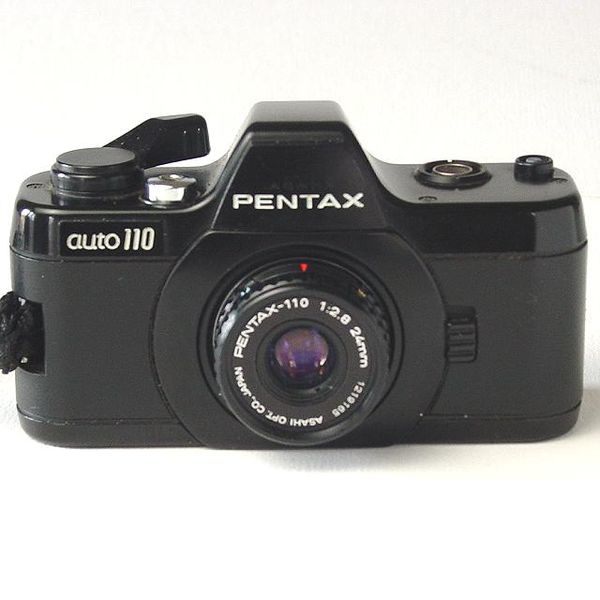
Pentax’s previous exercise in stupidity, the 110 film camera.
If I were Pentax, a business on its last legs and likely not here for the long term, I would take one last great risk and return to my roots of truly original design. Spotmatic or ME Super, anyone? Forget the me-too DSLRs, Pentax. You have little to offer there. You are RC Cola to Coke, doomed to remain on the lower shelf, scraping for pennies. What Pentax could have done, given the company’s undeniable design skills, is take a hammer to Fuji’s poorly executed, over-priced and over-engineered X100 and made a fixed focal length APS-C or MFT snapper, with a proper EVF or optical finder, a speedy wide angle f/2 or f/1.4 lens and sold the thing for $500. Don’t these people realize that there is an enormous demand from decent photographers (meaning they can take good pictures, not that they are moral!) who are sick and tired of lugging bulky DSLRs around and just want something small, sharp and super-responsive, at a reasonable price?
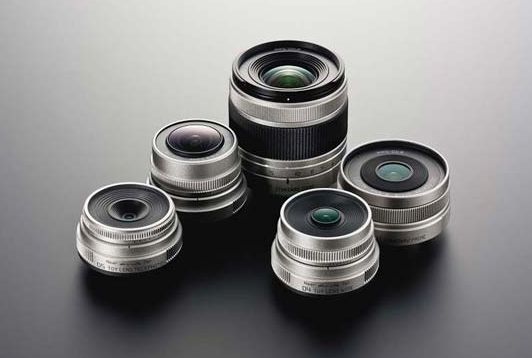
Pentax Q lenses – two ‘Toys’, a fisheye and a bulky zoom, plus the standard one.
To compound their silliness, Pentax is offering two self-described ‘Toy’ lenses where you will be able to pay hundreds of dollars when you could just buy a piece-of-crap Holga for $10. Better still, forget the $10 and mess up your image in Photoshop. Why, you don’t even have to wait for the processed film to come back that way.
And finally, they are making a fish-eye which, I predict, will sell no more than a dozen world wide. Sure, every snapper really needs one of those.
The picture below shows the size of the Pentax Q (red rectangle) superimposed on the Panasonic G1 (my current snapper) and G3 (on order) – you get a picayune sensor in exchange for a very small reduction in bulk. The thickness dimensions vary little:
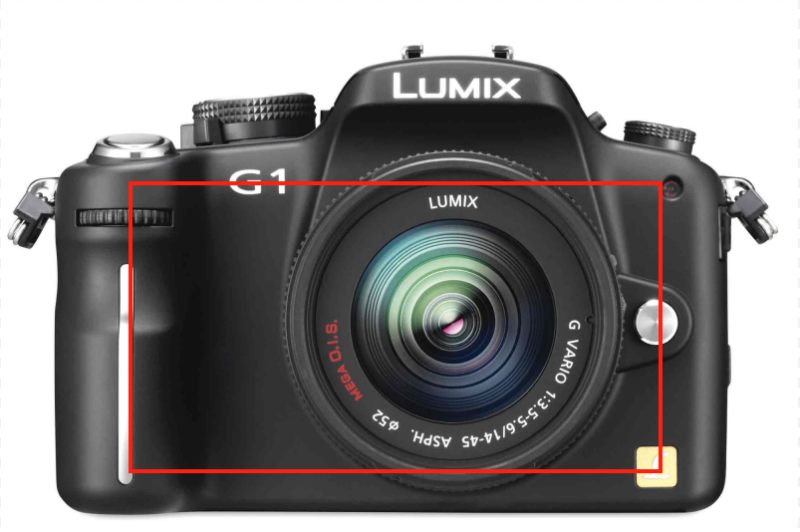
Pentax Q outline superimposed on the Panasonic G1.
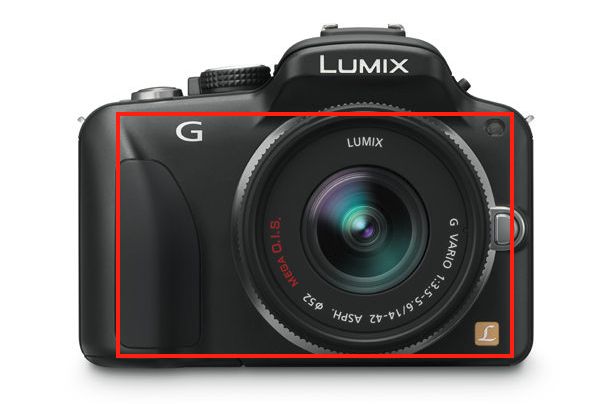
Pentax Q outline superimposed on the Panasonic G3.
That equation does not solve for this photographer.
